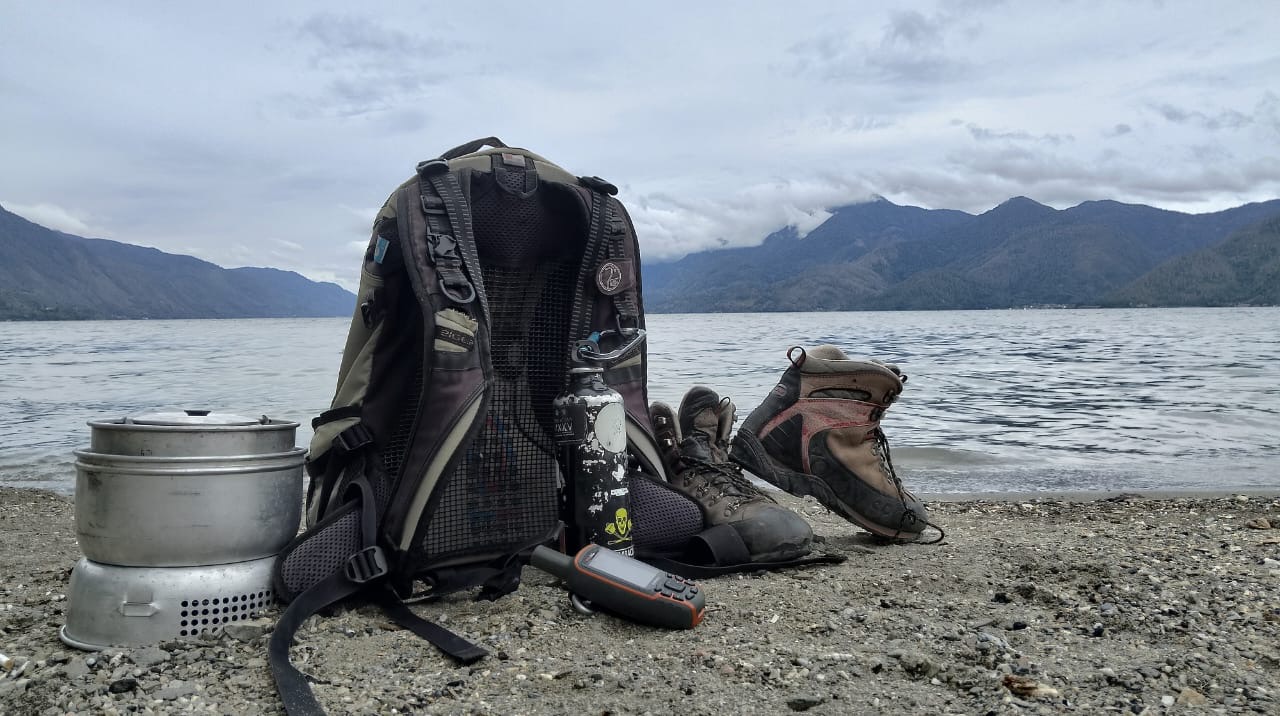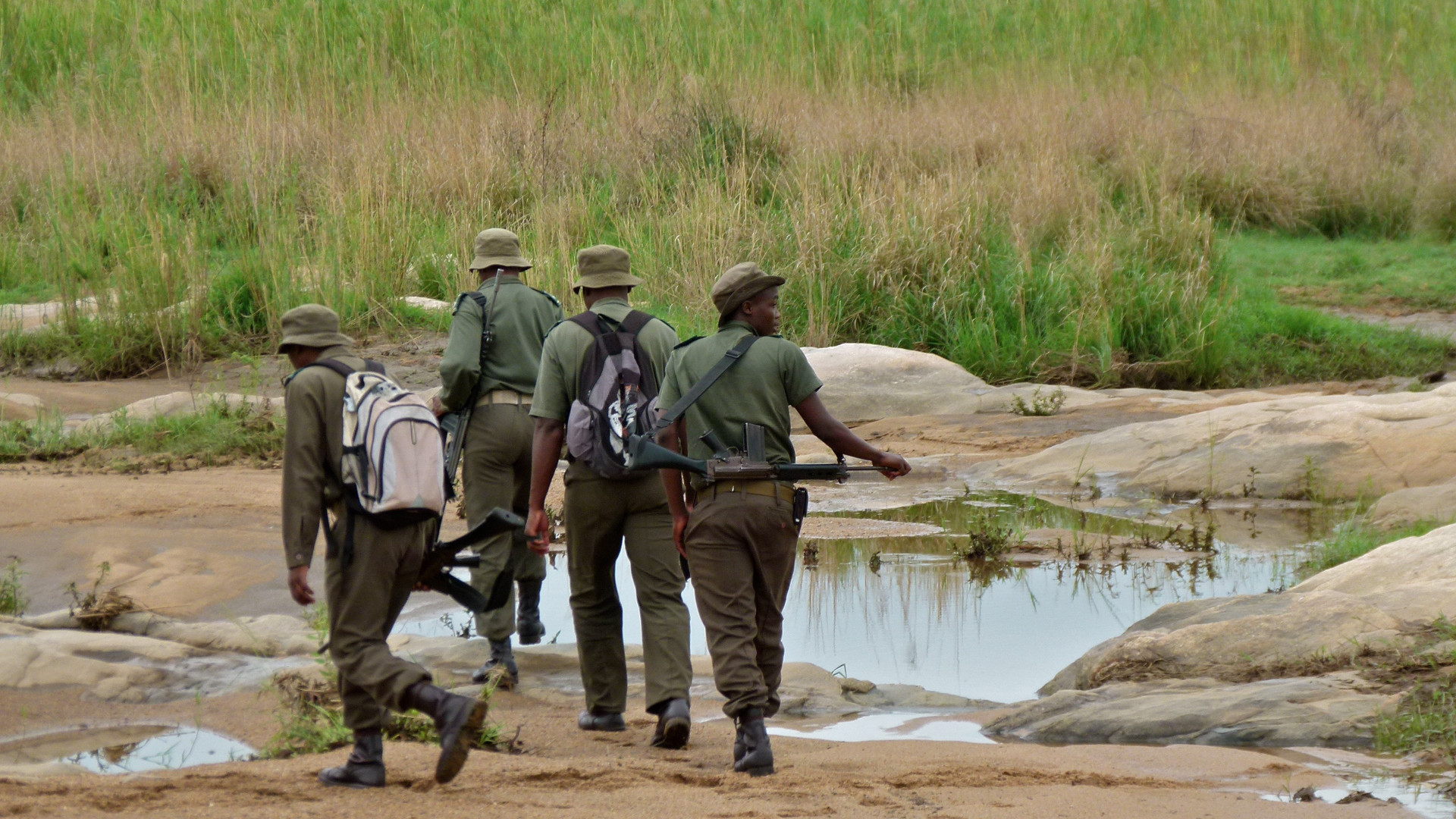National parks and other protected areas around the world went from being understaffed to entirely neglected after the Trump administration abruptly froze foreign aid in January 2025. The announcement generated grim headlines from some of the world’s top news sites: “On the chopping block with USAID: Elephants, tigers, and reefs,” “Across the world, conservation projects reel after abrupt U.S. funding cuts,” and “Elephants and rhinos at increased risk of poaching due to Trump funding cuts,” to quote just a few.
For conservation biologists these stories were excruciating to read because we already knew that the survival of protected areas and the intensely persecuted species living in them depends on consistent patrolling by rangers and personnel. Funding interruptions of even a few months can open the floodgates for poachers, artisanal miners, and illegal loggers.
Ranger shortfalls, particularly in sub-Saharan Africa and tropical Asia, heighten the probability and impacts of poaching, which disrupts ecosystems, erodes biocultural diversity, and diminishes wildlife tourism that benefits both local and global communities. But as the funding freezes spread into global consciousness, the media offered scant coverage on the links between at-risk species and the dearth of trained and equipped rangers in the affected regions.
As frontline defenders of imperiled ecosystems and species across the Earth, rangers are essential planetary healthcare workers. Before January 2025 U.S. government agencies recognized their importance and funded the development of ranger programs around the world. With support from USAID, the Southern African Wildlife College successfully trained hundreds of rangers to control wildlife trafficking in Zimbabwe, Mozambique, South Africa, and the Democratic Republic of Congo. A subset of the rangers received specialized training through the Braveheart Ranger Leadership Training Program, a curriculum designed to develop the necessary leadership and conflict resolution skills required to combat highly organized illegal wildlife trade. And in Asia the Rhinoceros and Tiger Conservation Fund — which the U.S. Congress launched in 1994 — provided salaries for hundreds of rangers and supported the construction of several dozen ranger stations in western Thailand, laying the groundwork for some of Asia’s most spectacular tiger recoveries. Now, if you go to the Rhino Tiger Fund grant webpage, you’ll be met by a notification as solemn as upsetting: “In accordance with the Presidents Executive Order, Reevaluating and Realigning United States Foreign Aid, this Notification of Funding Opportunity, F25AS00133, is currently suspended.”
Missing Protectors
These rangers — along with the programs and funding to train them — are desperately needed. A 2022 study estimated that the world’s protected areas employ about 286,000 rangers but need an estimated 1.25 million more to adequately defend wildlife.
Earlier in 2022 Parties to the Convention on Biological Diversity adopted the Kunming-Montreal Global Biodiversity Framework, which contains 23 global conservation targets nations aim to achieve by 2030. Known as the “30×30” initiative, the most ambitious of these targets aims to protect 30% of Earth’s terrestrial and marine habitats by 2030.
Conservation practitioners are nearly unanimous in their support: Expansion of protected area coverage to 30% by 2030 is essential for mitigation of climate change and biodiversity loss.

But scientists still disagree on 30×30’s frameworks to avoid creating more “paper parks,” protected areas established without the necessary management and enforcement to attain their conservation goals. Too many of the world’s protected areas are already “paper parks” that effectively exist on a map but not in the real world.
With the understanding that inadequate staffing already plagues nearly two-thirds of protected areas worldwide, there are legitimate concerns about protected area expansion outpacing allocations of trained rangers and staff to adequately safeguard biodiversity.
Instead of making headway toward filling in the gaps, we are now taking major steps backward.
The United States Has a Responsibility
The budget cuts are even more senseless when you consider that international companies — including those backed by American interests — have contributed to species endangerment by bulldozing, mining, and deforesting habitats in biodiversity hotspots. In 2022, for example, the United States formed agreements with the Democratic Republic of Congo and Zambia to establish a supply chain for electric vehicle batteries, paving the way toward increased mining of copper, lithium, and cobalt resources in both countries. Mining operations in the Congo have already turned large swaths of once intact rainforests into fragmented landscapes crisscrossed by dirt roads — conduits for penetrations by poachers.
Collectively we’ve shaped a global economy heavily skewed toward unbalanced natural resource extraction, where corporations export hardwoods from Myanmar, palm oil from Malaysia, and blood diamonds from Angola without any environmental protection.
Should Zambia be solely responsible for protecting its elephants and rhinos after American-backed mining companies have opened roads, facilitating access for poachers?
Is it fair to expect Bangladesh to patrol its vulnerable coastlines after sea-level rise from global climate change threatens to submerge vast tracts of tiger habitat?
Rangers Can’t Do It Alone
As a rule of thumb, some managers have called for protected areas to have one ranger on duty for every 10—50 square kilometers, depending on the species in need of protection and their value in illegal wildlife trade. The exact ranger-staffing density depends on a variety of factors, including the size, shape, and location of the area and the level of demand for the species they’re protecting.
Staffing levels are one thing, but it’s equally important, and often overlooked, to consider rangers’ experience and motivation particularly given the challenging and sometimes life-threatening situations they face. One study documented 2,351 on-duty ranger fatalities worldwide between 2006 and 2021. Homicides, accidents, illnesses, and wildlife attacks were the main causes of ranger deaths.
Global surveys have revealed dangerously low morale and high levels of burnout and loss of confidence among rangers, an unsurprising finding considering they remain among the most poorly paid, resource-strapped individuals in the environmental workforce. As we’ve seen with so many other professions, these conditions result in high turnover and the loss of institutional knowledge, putting the next generation of rangers even further behind.
The Fulbright program, another U.S. government international program at risk from Trump’s cuts, allowed me to gain some insights into the connections between rangers and ecosystem health.
The Sumatra Experience
I remember gazing out of the airplane window six years ago as the flight descended toward Banda Aceh, the city of my Fulbright assignment and Sumatra’s northernmost urban area. I felt uplifted by what I saw: a vast expanse of unbroken green stretched over rolling hills in all directions and disappearing into distant mists. After weeks of poring over maps, I knew Aceh province was cloaked in forest, but it was reassuring to see the green with my own eyes rather than as satellite imagery projected from a computer screen.
It wasn’t until landing in Aceh for the first time that I realized the enormity of the tasks ahead. Indonesian colleagues had warned me that protection measures for forests outside Aceh’s Leuser Ecosystem would be “weak,” but they were wrong: There were none at all.
I would soon learn that the 9,500 sq km area known as the Ulu Masen Ecosystem had a bare-bones patrol unit comprised of just six government rangers. Although they were supplemented, at times, by a scattered rag-tag assortment of community rangers — who were mobilized only when noble local NGOs obtained the requisite funding — the government team had no chance.
Despite intense pressures the Aceh provincial government has managed to maintain largely intact forests in Ulu Masen. But, as I observed, this impressive achievement was undermined by major limitations on the ground. The region’s patrol data was sparse to nonexistent, poaching was rampant, and the first tiger we photographed had three legs, hobbling along a snare-infested trail where we subsequently removed 28 of these malignant traps.

I knew that the real scale of the slaughter extended deep in the recesses of Ulu Masen’s mountains. It chilled me to think of the untold atrocities inflicted by faceless poachers backed by overwhelming demand, largely emanating from East Asian markets.
Last year we showed how heavy offtakes from poaching can affect tiger populations in Ulu Masen where, encouragingly, the prey base remains relatively healthy. During our expedition last month, rangers found only three tiger snares in an area of the landscape previously unpatrolled by our teams. However, before making comparisons or rushing to conclusions, we cannot objectively evaluate antipoaching efforts until patrolling is more consistent, backed by multiyear data.
Today Ulu Masen remains one of thousands of forested landscapes at a crossroads, at risk of further neglect and decay due to hasty, shortsighted budget cuts. As much as Ulu Masen may differ from intact forests on other continents, there is, running through them all, a common dark thread of ranger shortfalls.
That’s where the sudden withdrawal of U.S. funding, training, and other assistance leaves us. Unless we find other ways to fortify rangers in this time of great uncertainty, we face a real risk of not protecting more land by 2030 but seeing more extinctions.

Previously in The Revelator:
By Shutting Down USAID, Trump and Musk Will Worsen the Climate and Extinction Crises




